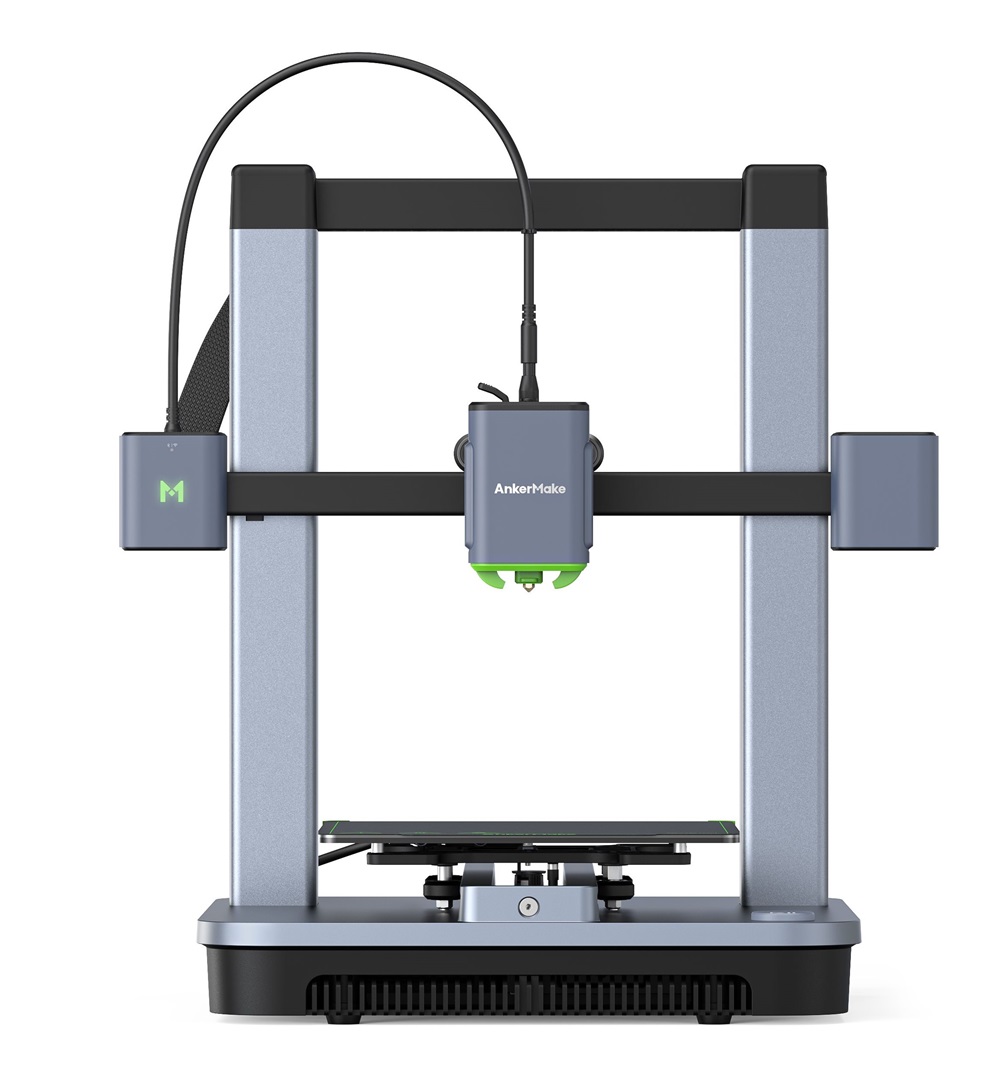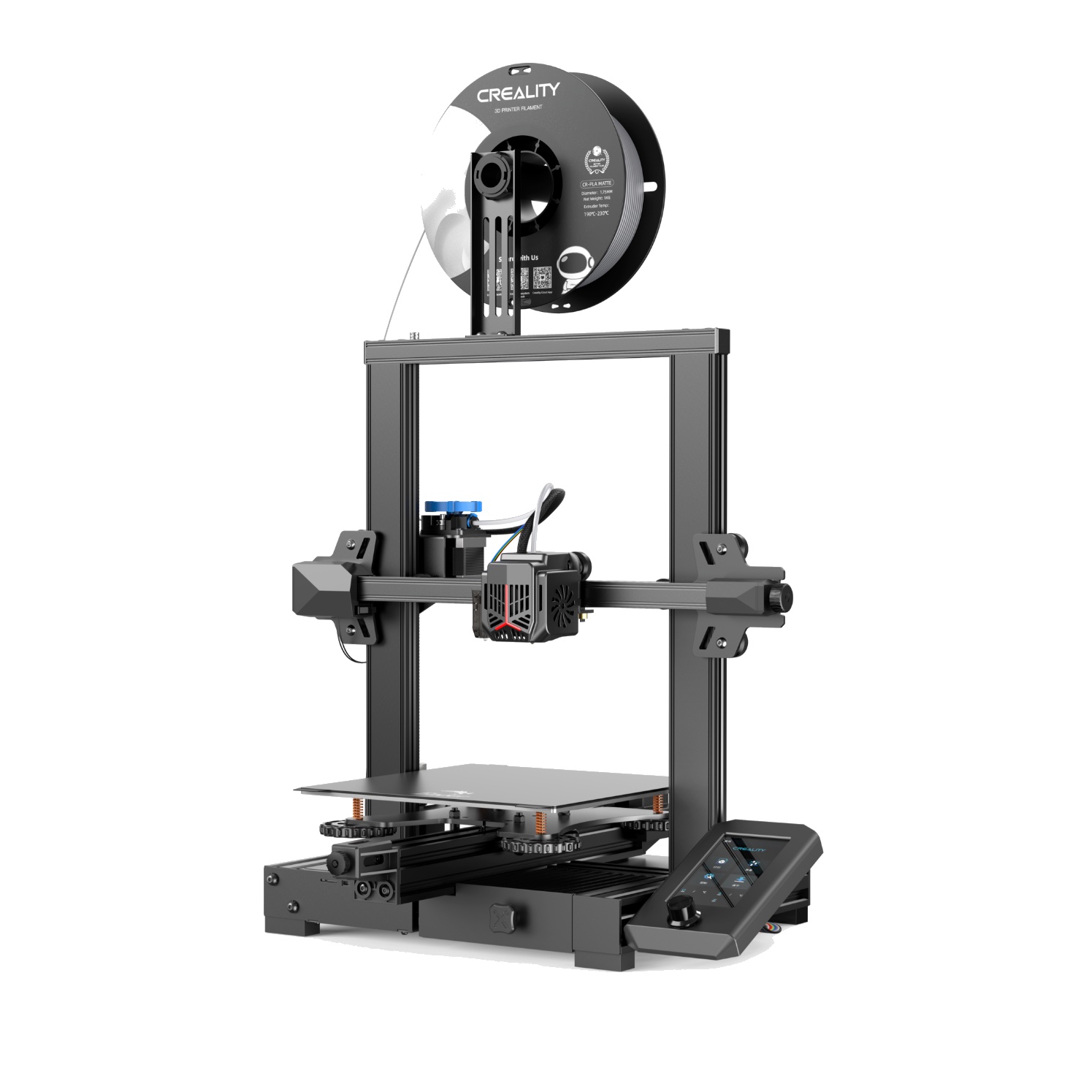Compare M5C vs Ender 3 V2 Neo
Comparison between the best 3D printers
Choose the best 3D printer at the best price. The cheapest 3D printers are here.
Buy a 3D printer here with 3D Fila.
 |
 |
|
| Model | M5C[BUY M5C] |
Ender 3 V2 Neo[BUY Ender 3 V2 Neo] |
| Printing Material | Filament | Filament |
| Buy Filament for AnkerMake M5C | Buy Filament forCreality 3D Ender 3 V2 Neo | |
| Estimated price | $399,00 | $310,00 |
| Manufacturer | AnkerMake | Creality 3D |
| Release Year | 2023 | 2022 |
| Print Volume [mm] | 220x220x250 | 220x220x250 |
| Printer Size [mm] | 466x374x480 | 438x424x472 |
| Weight [kg] | 9,6 | 9,8 |
| Power Loss Recovery | YES | YES |
| Enclosed printer | NO | NO |
| Bed Leveling | Automatic | Automatic |
| Filament End Sensor | YES | YES |
| Bed type | Heated | Heated |
| Power supply system | Direct Drive | Bowden |
| Standard nozzle | 0,4 | 0,4 |
| Maximum Nozzle Temperature [°C] | 300 | 260 |
| Maximum Bed Temperature [°C] | 100 | 100 |
| Maximum printing speed [mm/s] | 500 | 80 |
| Filament holder | YES | YES |
| Camera for supervision | NO | NO |
| Recommended filaments | PLA, PETG, TPU, ABS, PA, PLA-CF, PETG-CF, PA-CF | PLA, PETG |
| Recommended slicers | AnkerMake Studio (macOS, Windows), Simplify3D, Ultimaker Cura, PrusaSlicer | Cura, Simplify, Slic3r, IdeaMaker |
| Maximum Resolution [mm] | 0,1 | 0,1 |
| Processor | 4.2.2 mainboard | |
| Display | Display touchscreen 4,3'' | |
| Power Supply | 350 W | |
| Connectivity | Wi-Fi, USB-C, Bluetooth | SD / USB |
| Operating systems | Windows, Linux e Macbook | Windows, Mac, Linux |
| Date of registration in the system | 2024-09-11 | 2022-12-09 |
| Release date | 2023 | 2022 |
| Extra features | The AnkerMake M5 printer stands out for its impressive print speed, reaching up to 500mm/s. It features AI print monitoring, an integrated camera for creating timelapses, auto-leveling bed with pressure sensor, direct extruder, flexible PEI-coated build plate, and Wi-Fi and USB-C connectivity. Assembly is quick and easy, and the printer is designed to deliver high print quality and ease of use. | The Ender 3 V2 Neo printer stands out for its automatic bed leveling with the CR Touch system, ensuring high-quality initial layers. It features an all-metal Bowden extruder for increased durability and improved filament handling. Its flexible, PC-coated magnetic build plate makes it easy to remove prints and is durable and easy to clean. It also includes a new user interface with model preview and an updated gantry design. The Ender 3 V2 Neo maintains the same build volume and temperatures as the previous version, supporting popular filaments such as PLA and ABS. It features a quiet 32-bit mainboard and additional features such as a filament sensor, print recovery, simple 3-step assembly, an integrated toolbox, and belt tensioners. |
| Support for multiple colors and materials (AMS and CFS) | NO | NO |
Notes * |
||
| Cost-benefit | 7 / 10 | 6 / 10 |
| Hardware | 2.8 / 10 | 2.4 / 10 |
| Tela | . | . |
| Print volume | 3 / 10 | 3 / 10 |
| Performance | 4 / 10 | 0 / 10 |
| [BUY M5C] | [BUY Ender 3 V2 Neo] |
Conclusion |
| In comparing the AnkerMake M5C and the Creality 3D Ender 3 V2 Neo, several key aspects emerge that can guide an informed decision. The **AnkerMake M5C**, released in 2023, is positioned as a high-performance printer. It boasts a maximum printing speed of 500 mm/s, surpassing the Ender 3 V2 Neo's 80 mm/s, making it an ideal choice for those prioritizing speed in their 3D printing projects. Additionally, it features a direct drive extruder system, allowing for more efficient filament handling, and comes equipped with a user-friendly touchscreen interface for easy operation. The M5C also offers advanced connectivity options, including Wi-Fi and Bluetooth, which enhance its usability in a modern setting. On the other hand, the **Ender 3 V2 Neo**, although released a year earlier in 2022, is renowned for its reliability and strong community support. Its automatic bed leveling technology with the CR Touch system ensures a solid foundation for prints, leading to improved print quality, especially for beginners. Moreover, it features a Bowden extruder, known for durability, which contributes to smoother filament feeding, albeit at a slower speed. While the M5C has a higher estimated price, its advanced features, including better speed and connectivity, may provide a compelling cost-benefit in terms of performance and utility. In contrast, the Ender 3 V2 Neo presents a more budget-friendly option with established reliability, supporting popular filaments like PLA and ABS, making it a great choice for enthusiasts and beginners looking for affordability without compromising quality. In conclusion, the choice between the two depends significantly on the user’s priorities: if speed and advanced features are paramount, the AnkerMake M5C may be worth the investment. However, for those seeking a proven machine at a lower cost, the Ender 3 V2 Neo offers solid performance and build quality, making it a viable choice in the competitive landscape of 3D printing. |

